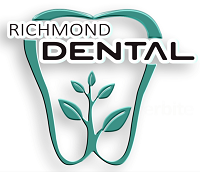A dental bridge is one of the common ways of replacing missing teeth. It closes the gap caused by the absence of one or several teeth, so eating and talking becomes easier. A bridge also serves to prevent your other teeth from shifting out of place. Dentists advise dental bridges for those who require a fixed solution for the gap created by one or more missing teeth.
What is a Dental Bridge?
A dental bridge is a false tooth (or teeth) which is supported by the teeth next to the gap, and these supporting teeth are called abutments. The false tooth in the middle is called a pontic. Dental bridges replace lost function and aesthetics and also maintain the relative position of the adjacent teeth.
There are four main types of dental bridges. Your dentist will recommend the one that is best for your dental health and your needs.
Types of Dental Bridges
1. Traditional Dental Bridge
The most common type of dental bridge is a traditional bridge. It has a false tooth, which is held in place by dental crowns which are attached to the natural teeth on either side of the gap. The dentist near you also carefully prepares the supporting teeth to ensure a secure fit for the bridge.
What Are the Advantages of a Traditional Bridge?
Strong and durable – If taken care of well, they can last for several years.
Looks natural – The colour and shape of your real teeth will be matched.
Chewing and Speaking – It helps to return to standard mouth function.
When Is It Used?
A traditional bridge is recommended if you have natural teeth on either side of the missing tooth. To place the crowns, however, the teeth on either side of the gap will require some enamel removal.
2. Cantilever Dental Bridge
A cantilever dental bridge is similar to a traditional bridge but is supported by only one natural tooth instead of two. This means the bridge is attached on just one side.
Benefits of a Cantilever Bridge:
- Requires less work – Only one tooth needs a crown.
- Good for certain areas – Often used for front teeth.
When Is It Used?
This type of dental bridges in SW Calgary is used when only one natural tooth is available next to the missing tooth. However, it is not as strong as a traditional bridge and is not recommended for back teeth where chewing pressure is high.
3. Maryland Dental Bridge
A Maryland dental bridge does not use crowns for support. Instead, it has a metal or porcelain framework that is bonded to the back of the nearby teeth.
Benefits of a Maryland Bridge:
- No need for crowns – Nearby teeth do not need to be reshaped.
- Less damage to natural teeth – Enamel is not removed.
- A good option for front teeth – Provides a natural look.
When Is It Used?
Maryland bridges are commonly used for front teeth, where there is less biting force. However, they may not be strong enough for back teeth, where more pressure is applied during chewing.
4. Implant-Supported Dental Bridge
An implant-supported dental bridge is different from other bridges because it is not supported by natural teeth. Instead, it is held in place by dental implants, which are small metal posts surgically placed into the jawbone.
Benefits of an Implant-Supported Bridge:
- Very strong and stable – Feels like natural teeth.
- Prevents bone loss – Implants stimulate the jawbone.
- Long-lasting – Can last a lifetime with proper care.
When Is It Used?
This type of bridge is recommended when multiple teeth are missing, and strong support is needed. However, the process takes longer because the implants must heal before the bridge is placed.
Dental Bridge vs Implant – Which One is Better?
A dental bridge vs implant is a common question for people replacing missing teeth. Both options have their benefits, but they work differently.
- A dental bridge is a good choice if you want a quicker and less invasive option. However, it may require reshaping healthy teeth.
- A dental implant is more durable and helps maintain bone health, but the process takes longer and requires surgery.
Your dentist will help you decide which option is best for your needs.
Is a Dental Bridge Permanent?
A dental bridge is not permanent, but it can last a long time with good care. On average, a bridge can last 10 to 15 years or even longer with proper oral hygiene and regular dental checkups. To make your bridge last:
- Brush and floss daily to prevent plaque buildup.
- Visit your dentist regularly for checkups and cleaning.
- Avoid chewing hard foods that can damage the bridge.
Wrapping Up
Choosing the right dental bridge depends on your dental health, budget, and personal preference. Whether you choose a traditional bridge, cantilever bridge, Maryland bridge, or implant-supported bridge, your dentist can help you find the best option for restoring your smile.
Restore Your Smile with the Right Bridge!
At Richmond Dental Clinic, we provide professional dental care for patients of all ages. Our services include dental checkups, bridges, and more. We focus on preventing and treating dental problems to keep your smile healthy. Our experienced dentist near you uses modern technology to offer safe and comfortable treatments.
Book your appointment today for a healthy smile!

